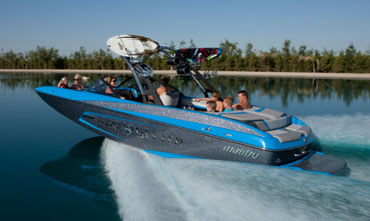Gen 2 Surf System, or Surf Gate? – Here’s a Study to Help you Decide.
Do you have questions about surf systems, how they work, and which one is truly a smarter purchase? Let us answer these questions for you with unbiased FACTS. In an independent study, research was done on the two most popular wake surf systems on the market, the MasterCraft Gen 2 Surf System vs Malibu Surf Gate. The results speak for themselves as to which system is a better buy.
Study Conducted By:

Jim is a senior consulting, product development and R&D professional with more than 30 years of experience in the transportation industry in Europe and the US. Jim has served on Technical Advisory Boards and his skills in new product creation have been recognized with the award of more than 20 US patents.

Steve is the President of SeaSystems Research LLC and also the Associate Director of the University of Michigan Marine Hydrodynamics Laboratory.
Tested Surf Systems
Three boats from both MasterCraft and Malibu were tested against each other, each being paired to the boat that closely resembled its size. Each boat was equipped with their brand’s surf system – MasterCraft with a Gen 2 Surf System and Malibu with Surf Gate.
Tests Performed
The boats were loaded with factory ballast according to the manufacturers recommended settings and adjusted for surfing on port and starboard sides. Using a combination of cameras, floating markers, and sensors, data points on wake size and length were collected.
- [accordionitem]
WHAT IS PUSH?PUSH?
The phrase “push” of the wake is a term that describes the sensation that the surfer feels propelling him along behind the boat. There are lots of forces contributing to “push” but the greatest force is gravity that comes from a high wake.
[/accordionitem]

- [accordionitem]
HOW IT’S MEASURED
Using a young amateur surfer, they were able to determine the area of push by using a rope that was instrumented to measure force. Where the rider was propelled by the wake without any strain in the rope, there was enough “push”. If the rider had to hang onto the rope in order to stay up with the boat then there was not enough “push”.
[/accordionitem]
Measurements were taken to see how long it took to switch the surf wave from one side to another. The ease of switching surf wave sides is a convenience for those in the boat.
User interface was evaluated to determine how easy it was to set up the boat fro wake surfing. Each boat comes with its own unique set-up procedure and control system that lets the consumer set the boat up for wake surfing. The easier the controls, the better the system is for control.


The steering handling of each boat was also evaluated while surfing. When the driver is at surf speed and switch from creating a surf on the other side, the boat changes direction. Measurements were taken for the amount of steering wheel correction needed.
- [accordionitem]
FUEL EFFICIENCY EFFICIENCY
The fuel levels were tested on each boat while surfing.
[/accordionitem]
[accordionitem]
DRAG IN WATER
Degree of drag caused by the system resulting in increased RPM was measured.
[/accordionitem]
[accordionitem]
AIR QUALITY QUALITY
Levels of carbon monoxide exposure produced from the engine was measured.
[/accordionitem]
[accordionitem]
NOISE LEVELS …
Noise level at surf speed measured inside and behind each boat was measured.
[/accordionitem]
[accordionitem]
PITCH OF BOAT
How much each boat pitches and rolls as a result of deployment of the surf system was measured.
[/accordionitem]
MasterCraft Gen 2

Malibu Surf Gate








